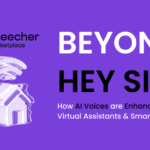In the realm of technology, where innovation often outpaces regulation, the advent of cloned voices has opened up new avenues for creativity and expression. These synthetic voices, meticulously crafted to mimic the unique qualities of real individuals, have found applications in everything from voiceovers to entertainment. However, this technological marvel also presents a complex challenge: how do we protect intellectual property rights when using cloned voices?
Consider the scenario of a popular actor whose voice is replicated and used without permission in a commercial or a deepfake video. The implications are far-reaching, potentially damaging the actor’s reputation and financial interests. As the technology continues to advance, it becomes increasingly difficult to distinguish between genuine and cloned voices, raising questions about the boundaries of copyright and trademark infringement.
My Proven Way to Make $100-$200 Per Day With 0 Investment – Watch THIS FREE Video to START >>

Understanding Intellectual Property Rights in the Context of Cloned Voices
When it comes to cloned voices, several types of intellectual property rights come into play. These include:
- Copyright: Protects original works of authorship, including sounds and recordings. If a cloned voice is a direct copy of a copyrighted voice recording, it could infringe on the copyright holder’s rights.
- Trademark: Protects distinctive symbols, words, or phrases associated with a particular product or service. If a cloned voice is used to impersonate a well-known celebrity or brand, it could infringe on their trademark rights.
- Right of Publicity: Protects a person’s right to control the commercial use of their identity or likeness. Cloned voices can infringe on this right if they are used to impersonate a famous individual without their consent.
Cloned voices can infringe on these rights in various ways. For example:
- Unauthorized use: Using a cloned voice without the permission of the original voice talent or rights holder can constitute copyright infringement.
- Impersonation: Creating a cloned voice that mimics a famous person’s voice can infringe on their right of publicity and potentially their trademark rights.
- False endorsement: Using a cloned voice to imply that a famous person endorses a product or service without their consent can also infringe on their right of publicity.
There have been several real-world cases where cloned voices have led to legal disputes. For instance:
- Deepfake celebrities: The rise of deepfake technology has enabled the creation of highly realistic videos featuring celebrities saying or doing things they never did. These deepfakes can infringe on the celebrities’ rights of publicity and potentially their trademark rights.
- Voice impersonation scams: Fraudsters have used cloned voices to impersonate trusted individuals, such as family members or bank representatives, in order to trick victims into handing over money or personal information.
- Unauthorized voiceovers: Companies have been accused of using cloned voices to replace original voice actors in their products, infringing on the original actors’ copyright rights.
As the technology continues to evolve, it is essential to understand the legal implications of using cloned voices to avoid potential legal disputes.
Obtaining Necessary Permissions and Licenses
When using cloned voices, it is crucial to obtain explicit permission from the original voice talent or rights holder. This ensures that you are legally authorized to use the cloned voice and avoids potential copyright or trademark infringement.
To obtain permission, you may need to:
- Identify the rights holder: Determine who owns the rights to the original voice recording. This could be the voice talent themselves, their agent, or a record label.
- Contact the rights holder: Reach out to the rights holder and express your interest in using a cloned voice based on their original recording.
- Negotiate a licensing agreement: If the rights holder agrees to grant permission, you will need to negotiate a licensing agreement that outlines the terms and conditions of the use. This agreement should specify factors such as:
- The scope of use (e.g., commercial, non-commercial)
- The duration of the license
- Geographical restrictions
- Fees or royalties
- Restrictions on modifications or alterations to the cloned voice
Negotiating licensing agreements can be complex, and it is often advisable to consult with a legal professional. However, by understanding the key terms and preparing for negotiations, you can increase your chances of reaching a mutually beneficial agreement.
Obtaining permissions can present several challenges and risks, including:
- Difficulty in contacting rights holders: It may be difficult to locate and contact the original voice talent or rights holder, especially if they are no longer active in the industry.
- High costs: Licensing fees can be substantial, especially for well-known voices or high-profile projects.
- Limited availability: The rights holder may not be willing to grant permission for certain types of uses or may have already granted exclusive rights to another party.
- Legal disputes: Even if you obtain permission, there is always a risk of legal disputes arising over the interpretation of the licensing agreement or allegations of infringement.
To mitigate these risks, it is essential to conduct thorough research, negotiate carefully, and document all agreements in writing.
My Proven Way to Make $100-$200 Per Day With 0 Investment – Watch THIS FREE Video to START >>
Technological Safeguards and Watermarking
As the technology surrounding cloned voices continues to evolve, so too do the methods for protecting them from unauthorized use. Several technological solutions have emerged, including:
- Encryption: Encrypting cloned voice recordings can make them more difficult for unauthorized individuals to access and use.
- Digital rights management (DRM): DRM systems can be used to control the distribution and playback of cloned voice recordings, preventing unauthorized copying or sharing.
- Blockchain technology: Blockchain can be used to create a digital ledger of cloned voice recordings, providing a secure and transparent way to track ownership and usage.
One of the most promising technological safeguards for cloned voices is watermarking. Watermarking involves embedding a hidden signal or pattern within the audio file. This signal can be used to identify the source of the recording or to track its distribution.
There are several different types of watermarking techniques, including:
- Time-domain watermarking: This involves modifying the amplitude or phase of the audio signal at specific time intervals.
- Frequency-domain watermarking: This involves modifying the frequency spectrum of the audio signal.
- Psychoacoustic watermarking: This technique takes advantage of human auditory perception to embed watermarks that are imperceptible to the listener.
The effectiveness of different watermarking techniques depends on factors such as the strength of the watermark, the quality of the audio recording, and the sophistication of the techniques used to detect and remove the watermark.
While watermarking can be a valuable tool for protecting cloned voices, it is not foolproof. Determined attackers may be able to develop techniques to detect and remove watermarks, especially if they have access to the original watermarking algorithm.
Therefore, it is important to combine watermarking with other technological safeguards to create a more robust protection strategy. Additionally, staying informed about the latest developments in watermarking technology and best practices can help ensure that your cloned voice recordings are adequately protected.
Legal and Ethical Considerations
The use of cloned voices without proper authorization can have significant legal implications. Infringement of copyright, trademark, or right of publicity can lead to civil lawsuits, including claims for damages, injunctions, and accounting of profits. Additionally, in some cases, criminal penalties may apply, particularly for fraudulent or malicious use of cloned voices.
Ethical concerns surrounding the use of cloned voices are also prevalent. Deepfakes, which use artificial intelligence to create highly realistic manipulated videos or audio recordings, raise serious ethical questions about the potential for misinformation, defamation, and invasion of privacy. Impersonation, whether intentional or unintentional, can also lead to ethical dilemmas, particularly when it involves sensitive or confidential information.
Potential legal remedies for intellectual property infringement include:
- Injunctions: Courts can issue injunctions to prevent further infringement and preserve the status quo.
- Damages: The infringer may be liable for compensatory damages, which aim to compensate the copyright owner for their losses, and punitive damages, which are intended to punish the infringer and deter future misconduct.
- Accounting of profits: In some cases, the infringer may be required to account for their profits from the infringement, which can be substantial, particularly for successful commercial ventures.
- Destruction of infringing materials: The infringer may be ordered to destroy any infringing copies or materials.
It is important to note that the specific legal remedies available may vary depending on the jurisdiction and the nature of the infringement. Consulting with a legal professional can provide guidance on the best course of action in a particular case.
By understanding the legal and ethical implications of using cloned voices, individuals and organizations can take steps to avoid potential legal disputes and maintain ethical standards.
Best Practices for Using Cloned Voices Responsibly
To use cloned voices ethically and legally, it is essential to follow these best practices:
- Obtain necessary permissions: Always seek explicit permission from the original voice talent or rights holder before using a cloned voice. This ensures that you are authorized to use the voice and avoids potential legal disputes.
- Understand copyright and trademark laws: Familiarize yourself with the relevant copyright and trademark laws in your jurisdiction. This will help you avoid infringing on the rights of others.
- Use cloned voices responsibly: Avoid using cloned voices in ways that could be harmful, misleading, or offensive. Be mindful of the potential consequences of using cloned voices to impersonate others or spread misinformation.
- Consider ethical implications: Evaluate the ethical implications of using cloned voices in your project. Consider the potential impact on individuals, communities, and society as a whole.
- Implement technological safeguards: Use technological safeguards, such as watermarking and encryption, to protect your cloned voice recordings and prevent unauthorized use.
- Be transparent and disclose: If you use cloned voices in your work, be transparent about your use. Disclose that you are using a cloned voice and provide information about the original voice talent or rights holder.
- Seek legal advice: If you have any questions or concerns about the legal or ethical implications of using cloned voices, consult with a legal professional.
By following these best practices, you can minimize the risks associated with using cloned voices and ensure that your use is ethical and legal. Remember, the responsible use of cloned voices requires a balance between creativity and respect for the rights of others.
My Proven Way to Make $100-$200 Per Day With 0 Investment – Watch THIS FREE Video to START >>
Conclusion
In the ever-evolving landscape of technology, cloned voices present both opportunities and challenges. While they offer new avenues for creativity and expression, they also raise concerns about intellectual property rights, ethical considerations, and legal implications. By understanding the complexities of using cloned voices, individuals and organizations can take steps to protect themselves from legal disputes and ensure that their use is ethical and responsible.
Ultimately, the successful use of cloned voices requires a delicate balance between innovation and respect. By following best practices, obtaining necessary permissions, and implementing appropriate safeguards, we can harness the power of this technology while upholding the principles of fairness and integrity.









